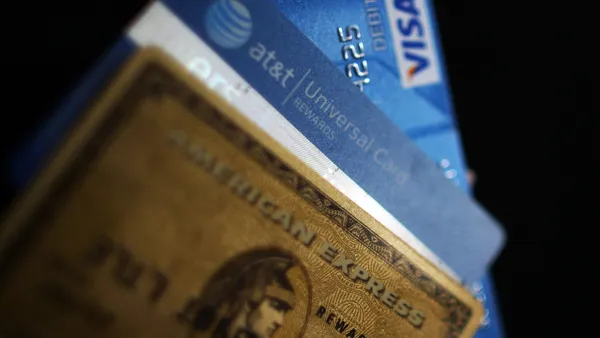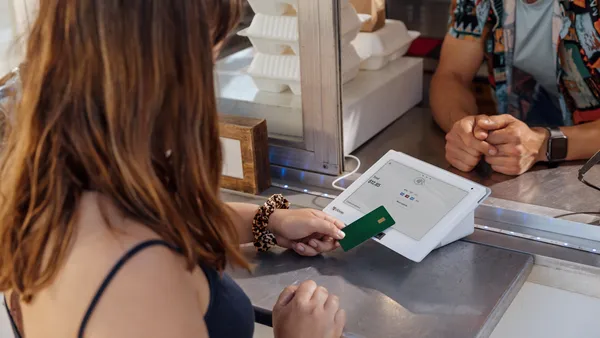Dive Brief:
- Wingstop has opened a cashless, digital-focused prototype in Dallas this week that will serve as an innovation lab to test new equipment and restaurant configurations, the chain announced Thursday.
- The 1,300-square-foot restaurant — which is roughly 400 feet smaller than the average Wingstop unit — offers no dining tables in its lobby. The concept builds toward Wingstop's goal of reaching 100% digital transactions with a focus on delivery and to-go orders.
- Wingstop's new store joins a slew of restaurant format designs that are being tested by quick service and fast casual chains to boost efficiency for digital diners.
Dive Insight:
Wingstop's "restaurant of the future" will allow the chain to try a variety of store format configurations in rapid succession, which will inform restaurant layouts the chain can develop in the future.
"[This] is a glimpse into the future of Wingstop — focused on 100% digital transactions, seamless back of house operations, ongoing flavor innovation, and a business model centered around our fans, who love to dine off-premise," Wingstop's Chief Growth Officer Marisa Carona said about the new concept in a statement.
Carryout and delivery account for almost 100% of the company's sales, according to the press release, a trend that has been boosted by Wingstop's investment in virtual brands and ghost kitchen locations. Last summer, the chicken wing chain opened a number of ghost kitchen units in Manhattan, building on a global network of 15 ghost kitchens at that time.
Wingstop CEO Charles Morrison said in a statement that these ghost kitchen units cost substantially less than opening a new restaurant, and the chain's new smaller footprint concept may also offer cost savings. The restaurant has been expanding through a combination of traditional units and ghost kitchens.
The growth of mobile ordering and digital ordering technology, like QR codes, has made it easier to open and sustain cashless stores focused entirely on off-premise offerings. This trend has sparked growing competition among major restaurant chains to develop store models that optimize off-premise ordering channels and reduce work for employees.
That competition predates the COVID-19 pandemic, with Starbucks opening its first pickup-only stores in China and the U.S. in 2019. Since then, chains have invested in more futuristic designs. Dunkin' opened a digital-only restaurant with no seating in Boston last year, for example, and Taco Bell launched a two-story restaurant with four drive-thru lanes.












